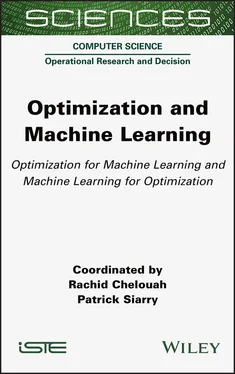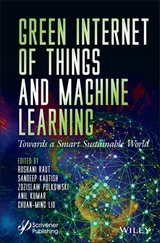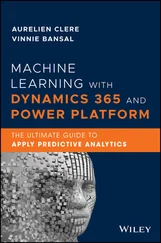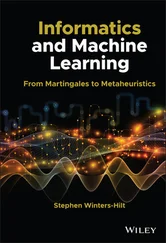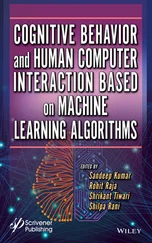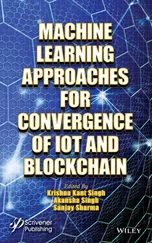The main objective of Chapter 2is to create the most appropriate scheduling solution that optimizes several QoS metrics simultaneously; thus, the authors adapt the widely used metaheuristic, “Genetic Algorithm” as an optimization method. The proposed scheduling approach is tested by simulating a healthcare IoT application, modeled as a workflow and several scientific workflow benchmarks. The results show the effectiveness of the proposed approach; it generates a scheduling plan that better optimizes the various QoS metrics considered.
Chapter 3focuses on the grey wolf optimization (GWO) and its adaptation to a continuous search space. It begins by addressing the mathematical modeling of optimization in a binary discrete search space. Binarization modules are then provided, allowing continuous metaheuristics for the solution of feature selection problems in a binary search space. These binarization modules are then used to create the binary metaheuristic bGWO. Finally, an experimental demonstration shows the performance of bGWO in solving feature selection problems on 18 datasets from the UCI Machine Learning Repository
Chapter 4addresses the type-2 mixed-model assembly line balancing problem with deterministic task times. To solve this problem, an enhancement of the greedy randomized adaptive search procedure – known as the reactive greedy randomized adaptive search procedure – is proposed. This reactive version is based on variation of the restricted candidate list parameter value, alpha. The proposed reactive GRASP is hybridized with the ranked positional weight heuristic to construct initial solutions. Results obtained by the proposed hybrid reactive GRASP are compared with those obtained by the basic GRASP, demonstrating the effect of the learning mechanism.
Part 2comprises four chapters devoted to artificial intelligence and machine learning and their applications.
The main challenge of recommender systems comes from modeling the dependence between the various entities, incorporating multifaceted information such as user preferences, item attributes and users’ mutual influence, which results in more complex features. To deal with this issue, the authors of Chapter 5design stacked ensemble machine learning models for recommendations. Their recommender system incorporates a collaborative filtering (CF) module and a stacking recommender module. An interactive attention mechanism is then introduced to model the mutual influence relationship between aspect users and items. Experiments on real-world datasets demonstrate that the proposed algorithm can achieve more accurate predictions and higher recommendation efficiency.
In internal auditing, the ability to process all of the available information related to the audit universe or subject could improve the quality of results. Classifying the audit text documents (unstructured data) could enable the use of additional information to improve the existing structured data, creating better knowledge support for the audit process. A comparison of results of classical machine learning and deep learning algorithms, combined with advanced word embeddings to classify the findings of internal audit reports, is presented in Chapter 6.
The design of a control architecture is a central problem in a project to realize an autonomous mobile robot. In the absence of a generic solution, it is essential to come up with a new approach detailing the design process of an intelligent system that is capable of adapting to all changes in the navigation environment. Chapter 7proposes to use the multiagent paradigm and fuzzy logic in the design of the control architecture for the autonomous navigation of the mobile robot in a constrained environment. The control architecture is designed to solve various problems created during navigation. It is made up of four agents: the perception of the agent, the feasibility of the agent, the locomotion agent and the fuzzy control agent.
Intrusion detection is a key concept in modern computer network security. It is aimed at analyzing the current state of a network in real time and identifying potential anomalies in the system, reporting them as soon as they are identified. This allows for the detection of previously unknown malware. Artificial neural networks are supervised machine learning algorithms inspired by the human brain. This kind of network is a popular choice among data mining techniques today and has already been proven to be a valuable choice for intrusion detection. In Chapter 8, the author builds a feed-forward neural network trained on the NSL-KDD dataset, in order to classify network connections as belonging to one of two possible categories: normal or anomalous. Its goal is to maximize the level of accuracy in recognizing new data samples.
PART 1 Optimization
1
Vehicle Routing Problems with Loading Constraints: An Overview of Variants and Solution Methods
Ines SBAI1 and Saoussen KRICHEN1
1Université de Tunis, Institut Supérieur de Gestion de Tunis, LARODEC Laboratory, Tunisia
This chapter combines two of the most studied combinatorial optimization problems, namely, the capacitated vehicle routing problem (CVRP) and the two/three-dimensional bin packing problem (2/3D-BPP). It focuses heavily on real-life transportation problems such as the transportation of furniture or industrial machinery. An extensive overview of the CVRP with two/three-dimensional loading constraints is presented by surveying over 76 existing contributions. We provide an updated review of the variants of the L-CVRP studied in the literature and analyze some of the most popular optimization methods presented in the existing literature. Alongside this, we discuss their variants and constraints, their applications for solving real-world problems, as well as their impact on the current literature.
Although the vehicle routing problem (VRP) is the most studied combinatorial optimization problem, the challenge still remains to achieve the most optimal and effective results (Sbai et al . 2020a). The VRP aims to minimize total traveling cost in cases where a fleet of identical vehicles is used to visit a set of customers. The VRP is used in many real-world applications, for example: pharmaceutical distribution, food distribution, the urban bus problem and garbage collection. The basic version of the VRP is known as the capacitated VRP (CVRP); each vehicle has a fixed capacity which must be respected and must not be exceeded when loading items. It is aimed at minimizing the total cost of serving all the customers. The CVRP can be extended to the VRP with time windows (VRPTW) by adding time windows to define the overall traveling time for a vehicle. It can also be extended to the VRP with pickups and deliveries (VRPPD) where orders may be picked up and delivered. Another variant of the basic CVRP is the VRP with backhauls (VRPB). Here, pickups and deliveries may be combined in a single route; all delivery requests therefore need to be performed before the empty vehicle can collect goods from customer locations. Two surveys, conducted by Cordeau et al . (2002) and Laporte (2009), provide further details.
Loading and transporting items from the depot to different customers are practical problems that are regularly encountered within the logistics industry. The loading problem can be extended to the BBP. When taking into account the number of dimensions that are relevant to the problem, packing problems are classified into 2D and 3D problems. The first related problem is the 2D-BPP (Zang et al . 2017; Wei et al . 2018; Sbai and Krichen 2019) where both items and bins are rectangular and the aim is to pack all items, without overlap, into the minimum number of bins. The second one is the 3D-BPP (Araujo et al . 2019; Pugliese et al . 2019); this consists of finding an efficient and accurate way to place 3D rectangular goods into the minimum number of 3D containers (bins), while ensuring goods are housed completely within the containers.
Читать дальше
